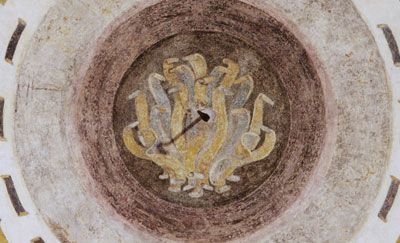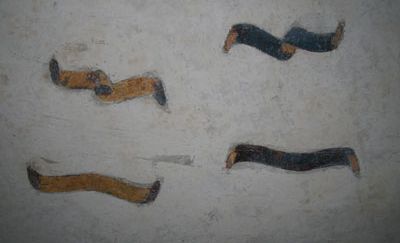This beautiful room, together with the one next door of the Arrows, was added a few years after 1506-1508, when the work on the main body of the building was terminated.
In honour of Isabella d'Este, the Room of the Briefs (de’ brevi) is decorated in the blue and yellow colours of the Este family. The device in the central oculus of the large cloister vault depicts a bundle of small sheets of paper (briefs) with good luck messages, to be drawn at random by guests eager to know their future. The bundle almost seems thrown through the oculus, with the pages fluttering down around the whole vault.
The room contains works that reflect the Gonzaga’s passion for collecting ancient art and art in the classical style. The archive records, chronicles, works commissioned and purchased, the artists called to work for the family and the very palazzi themselves are tangible evidence of this keen interest. Although it is no secret that the Gonzaga collections had been largely dispersed, during the Hapsburg domination Empress Maria Theresa brought together the statuary still surviving in the nearby Gonzaga residences. In doing so she brought the taste for classical art so well loved by the Gonzaga back to the city.
Although most of the works collected by Maria Theresa are conserved at Palazzo Ducale, the examples on display here come from the Palazzo Ducale at Sabbioneta and Villa la Favorita, just outside Mantua. The works offer visitors a panoramic view of statues from the classical age and a small sample of the Gonzaga collections.
The magnificent throne-like seat known as a Proedria (II-I century B.C.) comes originally from a Greek theatre.






